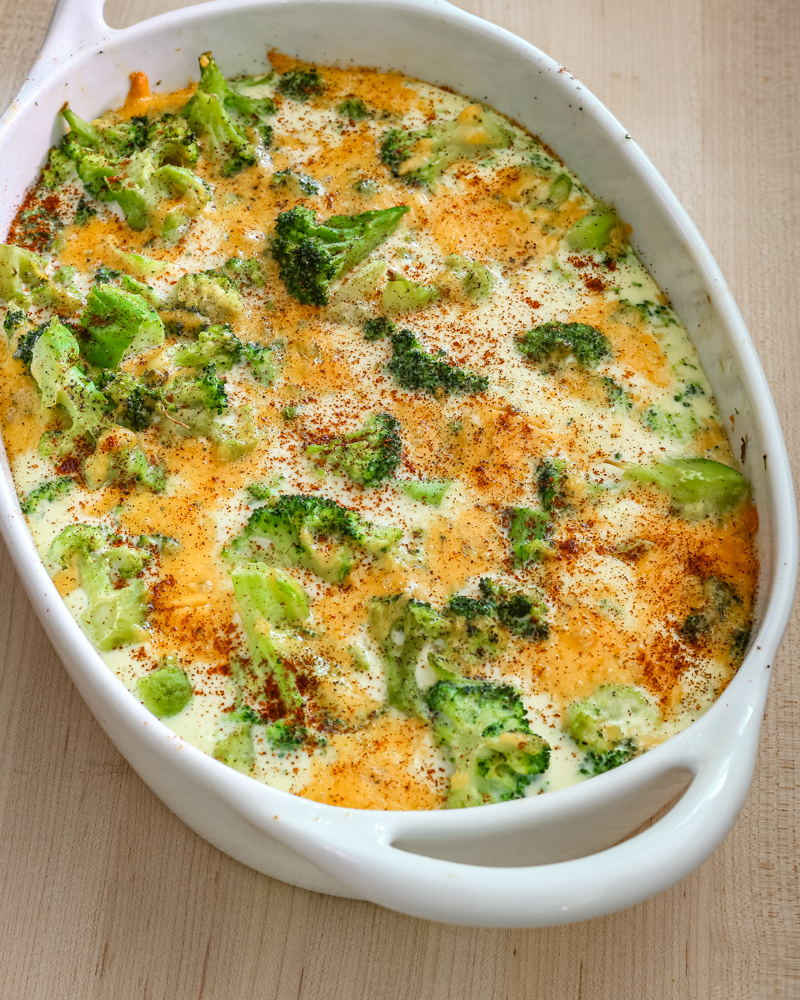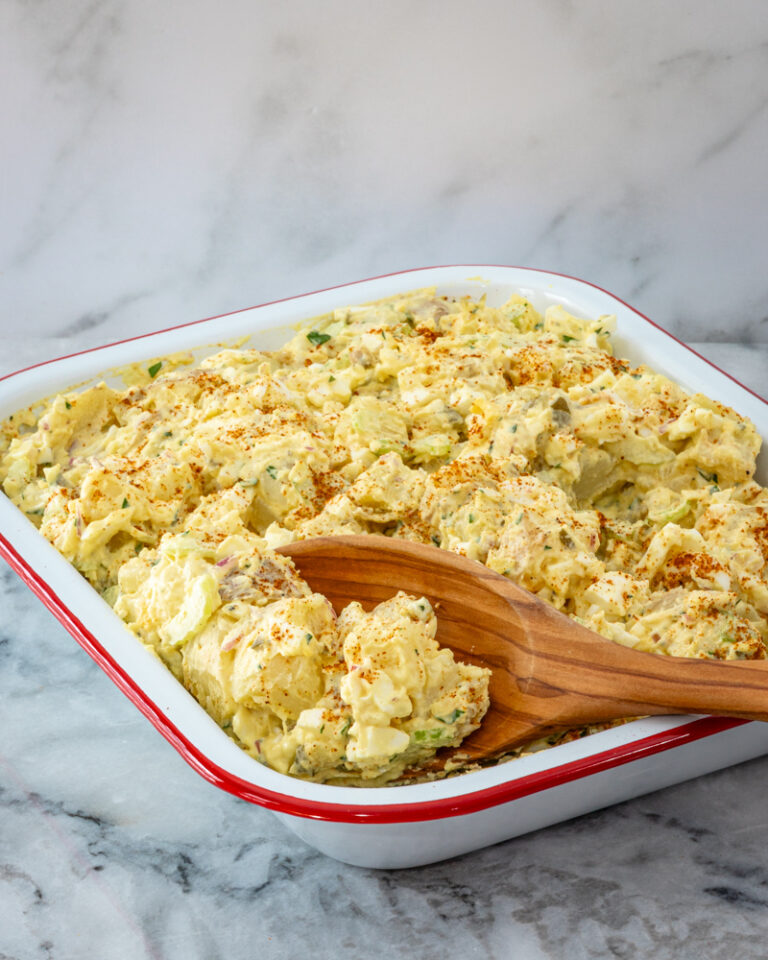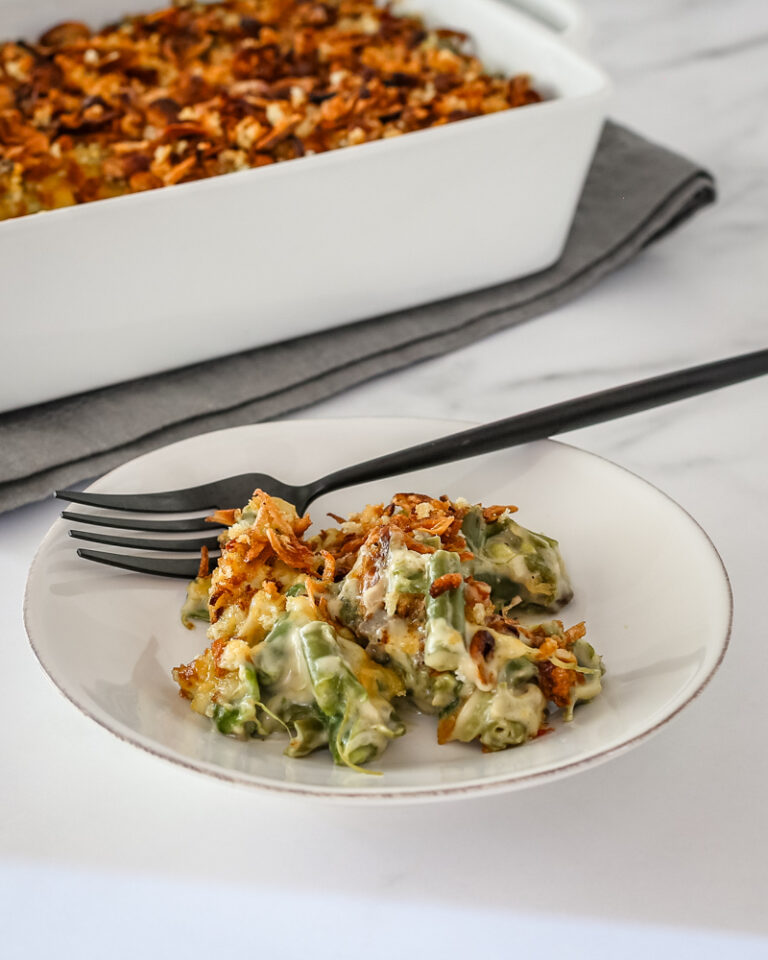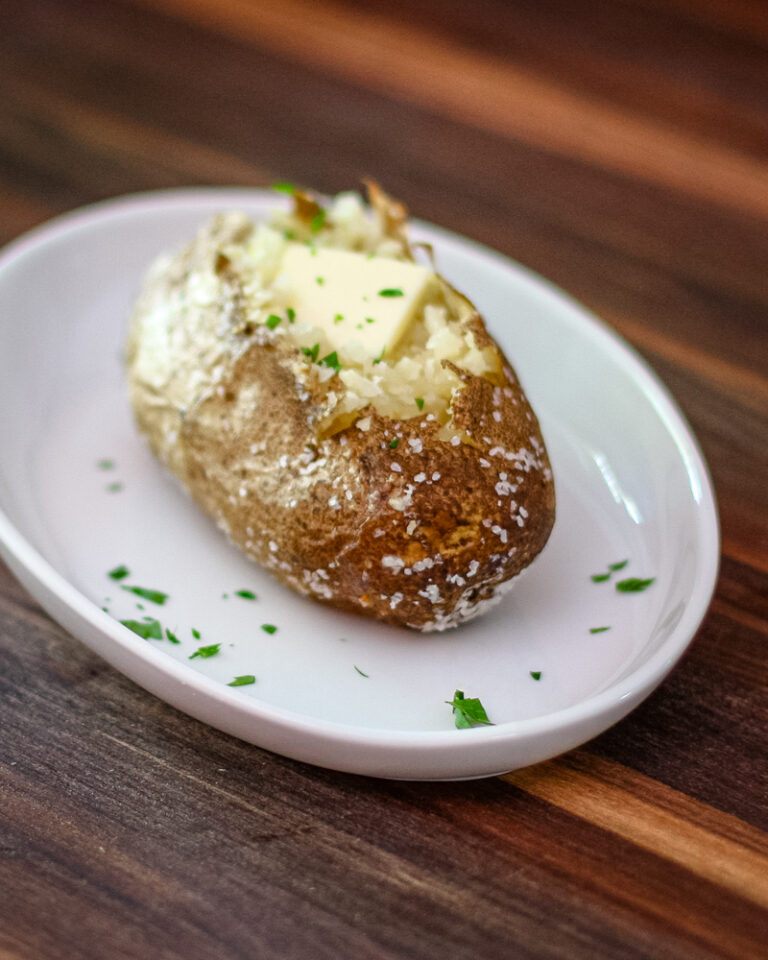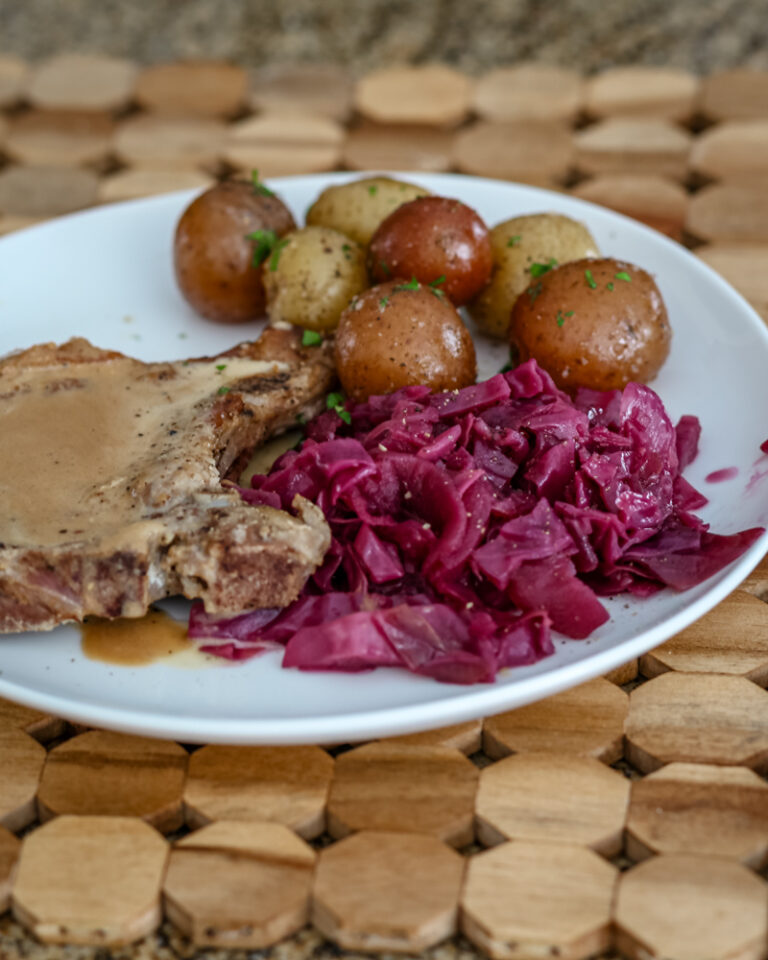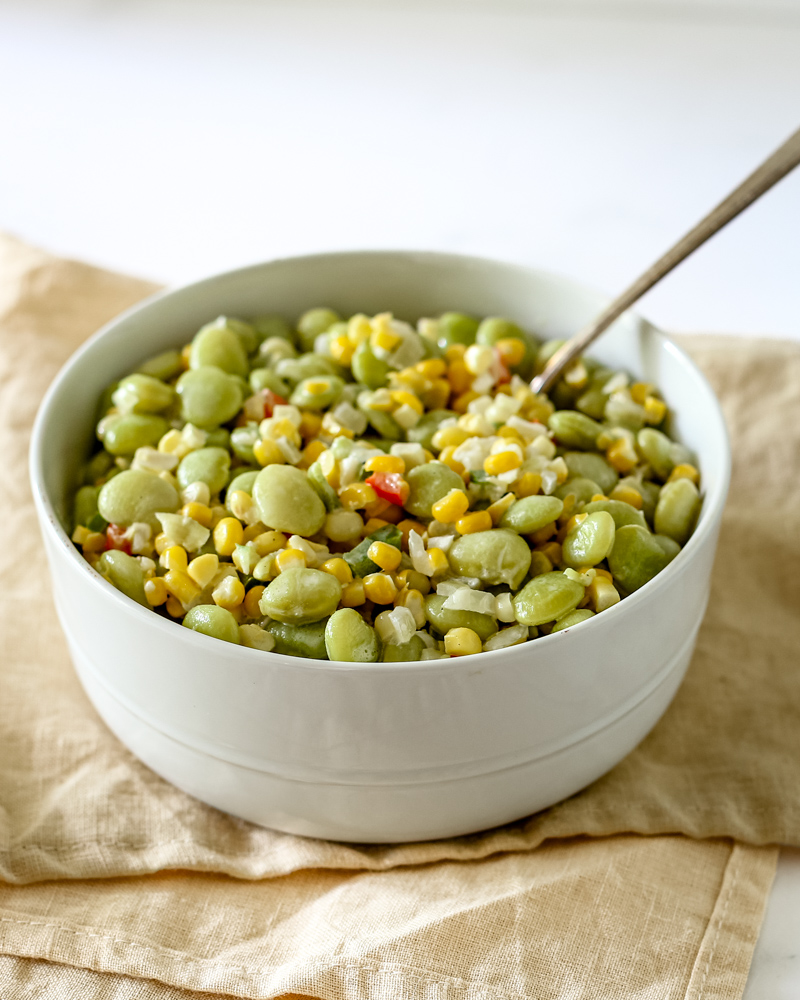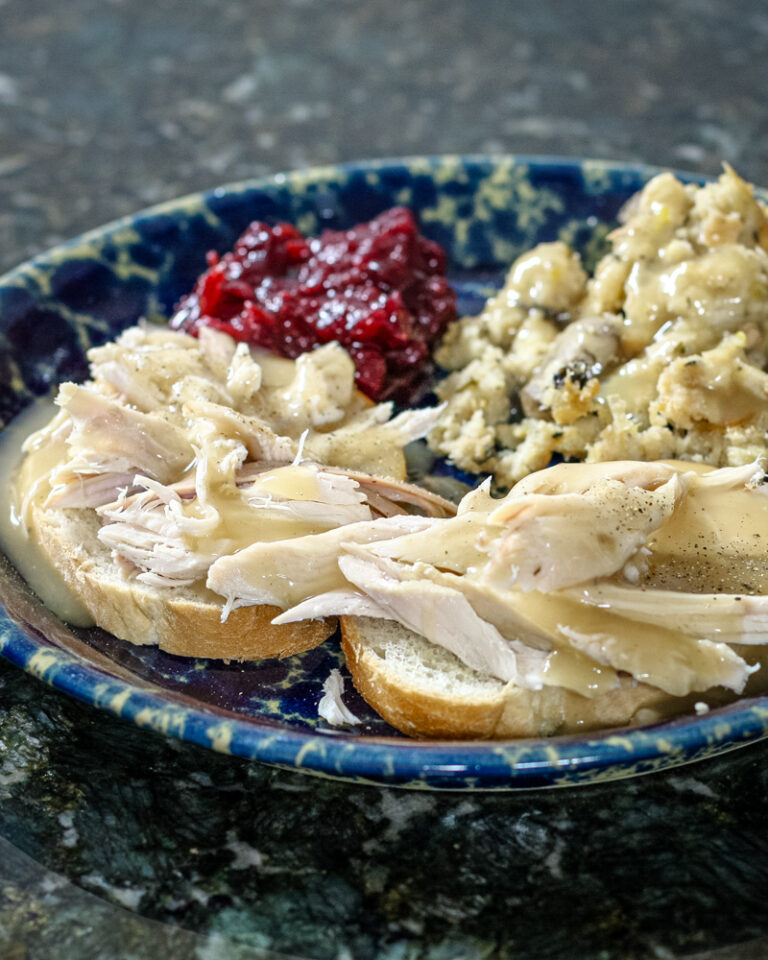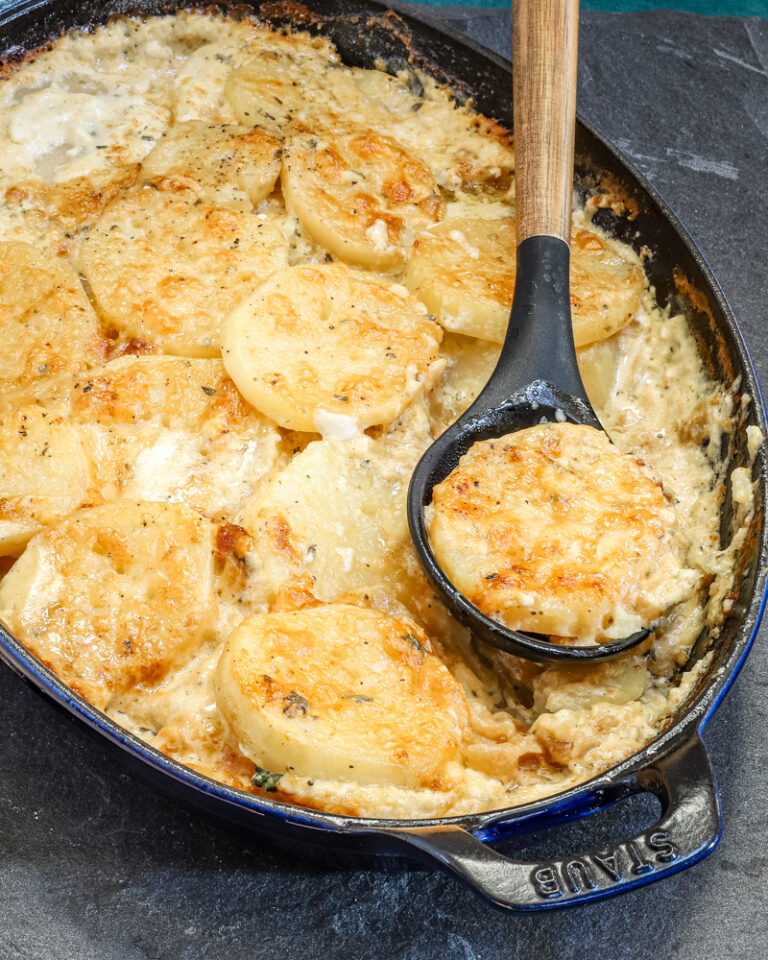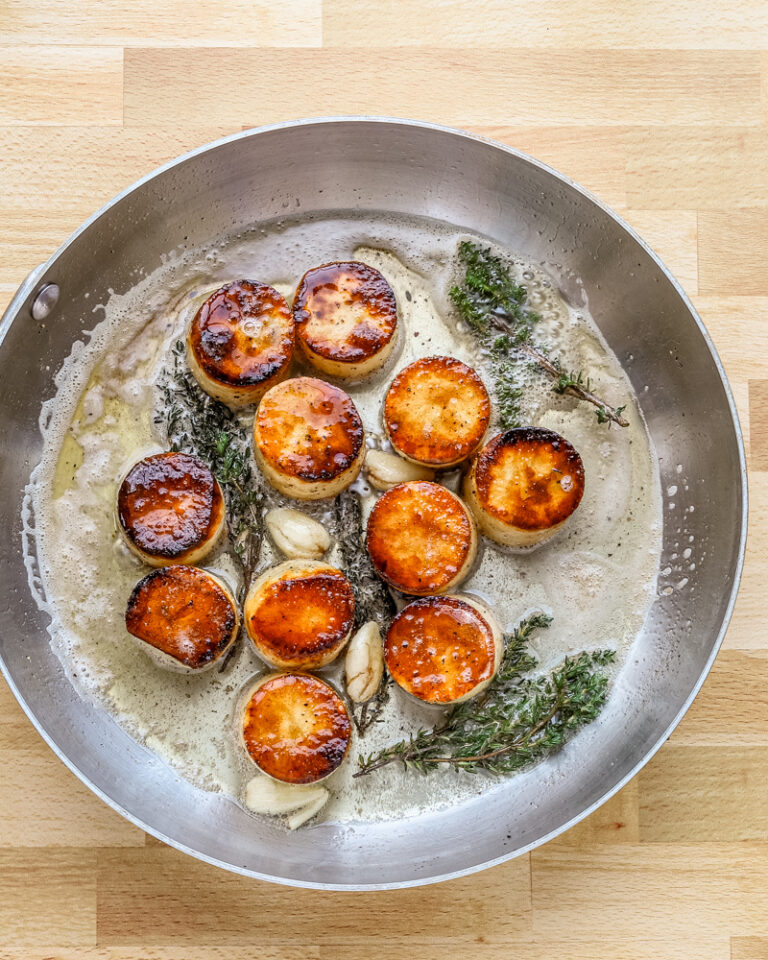Creamed Leeks
Creamed leeks are a delicious side dish. Cooking them in cream brings out their sweetness, and they pair perfectly with various main courses.
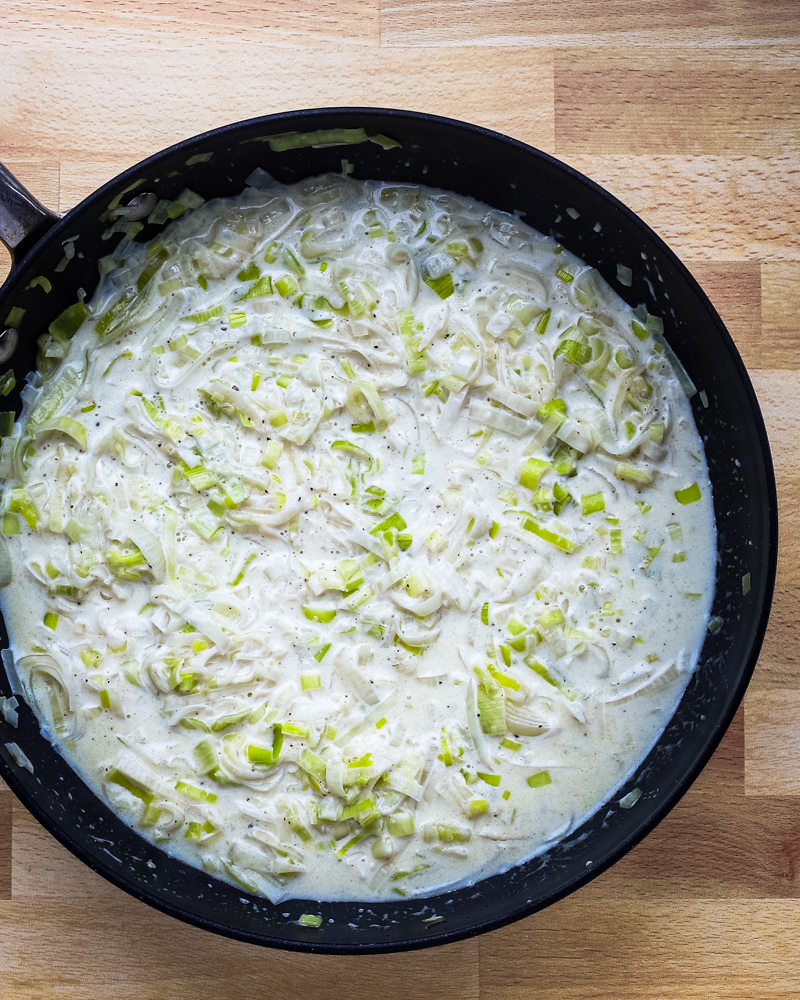
Creamed leeks are one of those quietly luxurious side dishes that make a meal feel special. Gentle cooking brings out the leeks’ natural sweetness, and a splash of cream turns them into something soft, silky, and deeply flavorful. The result is a dish that feels rich and indulgent, yet comforting and uncomplicated.
This version is simmered in chicken broth and finished with heavy cream and Parmesan for a savory, mellow flavor that complements almost anything — roast chicken, baked fish, pork tenderloin, or even a plate of grains and beans. Whether for a cozy family dinner or a polished holiday spread, creamed leeks are the definition of understated elegance.
What You’ll Like About This Recipe
Elegant flavor with minimal effort. Leeks turn soft, sweet, and silky with just a short cook time, and the cream and Parmesan deepen the flavors without requiring complicated techniques. It’s a side dish that tastes refined but comes together in one pan.
Versatile and complementary. Creamed leeks blend seamlessly with many main courses because their flavor is mild and gently savory. They offer richness without heaviness and complement poultry, pork, fish, and vegetarian entrées alike.
Quick stovetop preparation. This recipe is ready in under 25 minutes, making it an excellent choice for busy weeknights or multi-course meals. While the leeks soften, you can easily prepare the rest of the meal.
Customizable seasoning. The dish is delicious with just salt, pepper, and Parmesan, but you can easily adjust the flavor with herbs, spices, citrus, or broth variations. A pinch of cayenne adds warmth, while thyme or lemon zest brings freshness.
A great way to use leeks. Leeks are often overlooked, yet they offer subtle sweetness and versatility. This recipe lets them shine, turning an inexpensive vegetable into a memorable, comforting side dish.
Ingredient Notes
- Unsalted butter – Adds richness and helps soften the leeks gently without browning. Using unsalted butter gives you better control over seasoning.
- Leeks – Large leeks provide the best yield. Use only the white and light green parts, as the dark green tops can be tough. Thorough washing is essential because leeks trap grit between the layers. Thinly slicing them helps them soften evenly.
- Chicken broth – Provides savory depth and keeps the leeks moist as they cook. You may substitute vegetable broth for a vegetarian version.
- Heavy cream – Creates the luxurious, silky texture that makes this dish so comforting. It reduces slightly as it cooks, coating the leeks beautifully.
- Kosher salt and black pepper – Simple seasonings that highlight the sweetness of the leeks. Adjust to taste before serving.
- Cayenne pepper – Optional but excellent for adding gentle heat that cuts through the creaminess.
- Parmesan cheese – Adds nutty depth and helps thicken the cream slightly. Freshly grated Parmesan melts more smoothly than pre-grated varieties.
How to Make It
- Wash the leeks thoroughly by slicing them and separating the layers under running water to remove grit. Dry slightly before adding them to the skillet so they sauté rather than steam immediately.
- Melt the butter in a skillet over medium heat and add the leeks, stirring to coat them well. Add the broth so the leeks soften gently without browning, which preserves their delicate flavor.
- Cover the skillet and cook until the leeks become tender and silky. Stir occasionally to ensure even softening and prevent sticking.
- Pour in the cream and add Parmesan, stirring until everything melts together and the leeks are coated in a smooth, creamy sauce. Taste and adjust seasoning with salt, pepper, or cayenne.
- Serve warm as a comforting, elegant side that complements a wide variety of main dishes.
Pro Tips
- Clean leeks thoroughly—grit and soil often hide between layers. Soak sliced leeks briefly in cold water if needed.
- Thin slicing helps the leeks soften faster and more evenly, giving the dish a smoother texture.
- For a vegetarian version, use vegetable broth instead of chicken broth and choose a vegetarian Parmesan-style cheese.
- Allow the cream to reduce slightly so the sauce thickens naturally and coats the leeks perfectly.
- Add a squeeze of lemon juice at the end if the dish needs brightness to balance the richness.
Recipe Variations
- Add herbs. – Fresh thyme, parsley, or tarragon adds aromatic brightness. Stir herbs in just before serving so they stay fresh and vibrant.
- Make it richer. – Add an extra tablespoon of butter or a splash of white wine before adding the broth for a more indulgent flavor.
- Use half-and-half instead of cream. – A lighter option that still gives a creamy result. Simmer a bit longer to reduce it to a silky consistency.
- Add garlic or shallots. – Cook a minced clove or a tablespoon of finely chopped shallots with the leeks for deeper savory complexity.
- Make it cheesy. – For a gratin-style dish, transfer the creamed leeks to a baking dish, top with breadcrumbs and extra Parmesan, and broil briefly.
Serving Suggestions
- Serve alongside roasted chicken, pork loin, lamb chops, or baked fish for a refined, restaurant-style plate.
- Pair with mashed potatoes, rice pilaf, or crusty bread to soak up the creamy sauce.
- Add creamed leeks to pasta or spoon them over cooked grains for a simple, comforting vegetarian meal.
- Choose this dish for holiday meals—it fits beautifully next to turkey, ham, or prime rib.
How to Store
Refrigerate: Store leftovers in an airtight container for up to 3 days. Reheat gently on the stovetop, adding a splash of cream or broth if the sauce thickens.
Freeze: Freezing is not recommended, as cream-based sauces can separate and leeks may become watery once thawed.
Reheat: Warm over low heat, stirring frequently. Avoid high heat to prevent curdling or scorching the cream.
Frequently Asked Questions

Creamed Leeks
Ingredients
- 1 tablespoon unsalted butter
- 2 leeks, large, washed, thinly sliced (white and light green only)
- 1/2 cup chicken broth
- 1/2 cup heavy cream
- 1/2 teaspoon kosher salt, or to taste
- Dash freshly ground black pepper
- pinch cayenne pepper, optional
- 2 tablespoons grated Parmesan cheese
Instructions
- Prepare and cook the leeks: Melt the butter in a large skillet over medium heat. Add the leeks, broth, and a dash of salt and pepper. Cover the pan, reduce the heat to low, and cook for 10 minutes or until the leeks are softened.
- Finish with cream and serve: Add the cream and Parmesan cheese to the leeks and taste. Add salt and pepper as needed. Stir and serve. Enjoy!
Nutrition
Disclaimer:
Our nutritional information is based on a third-party application that analyzes the ingredients list to determine the values. The information is meant to be helpful, but should be considered an estimate. Values may differ depending on measurements, brands, serving variations, and database availability.



